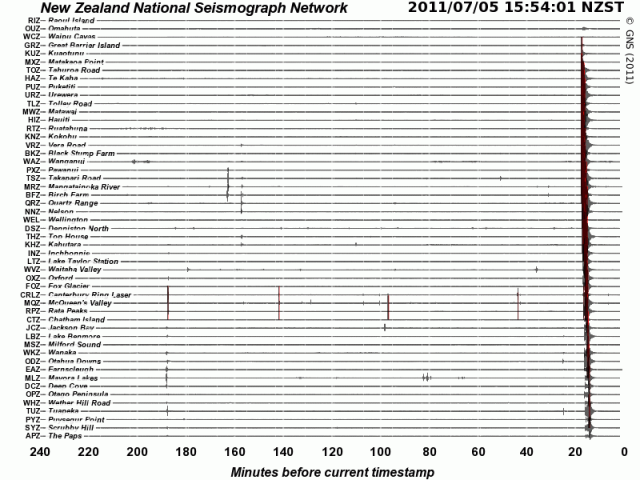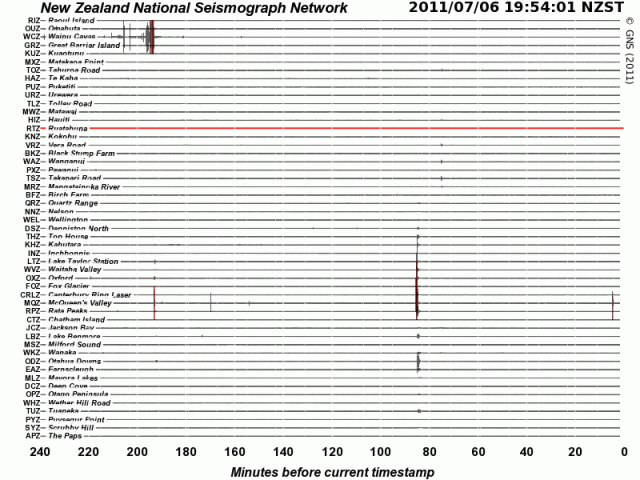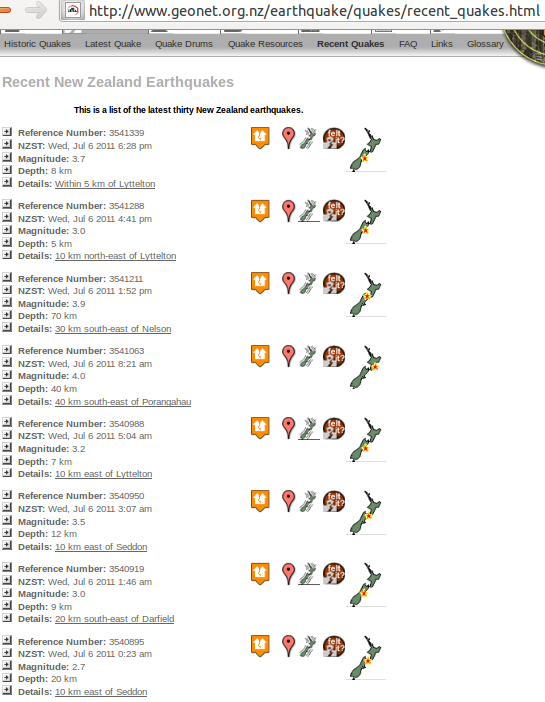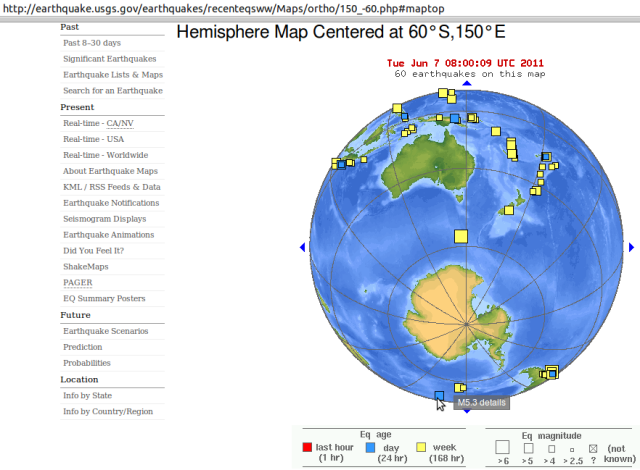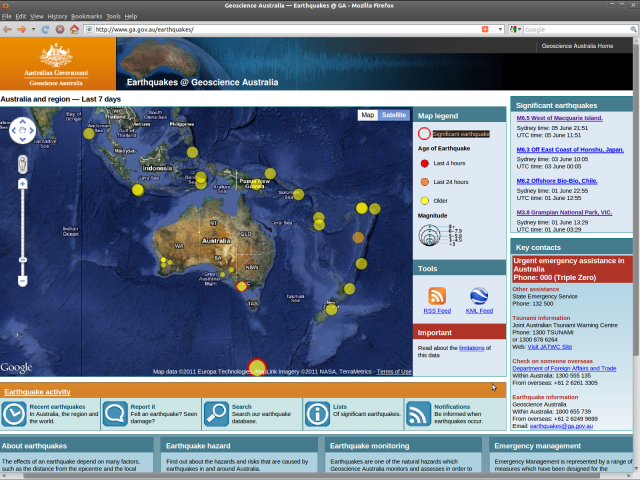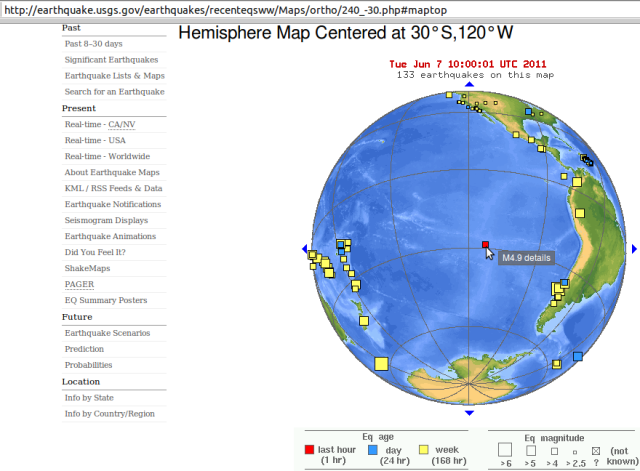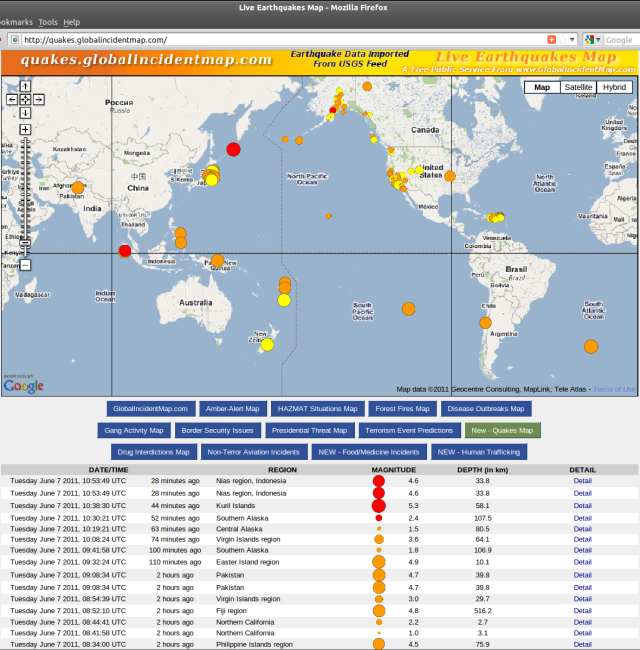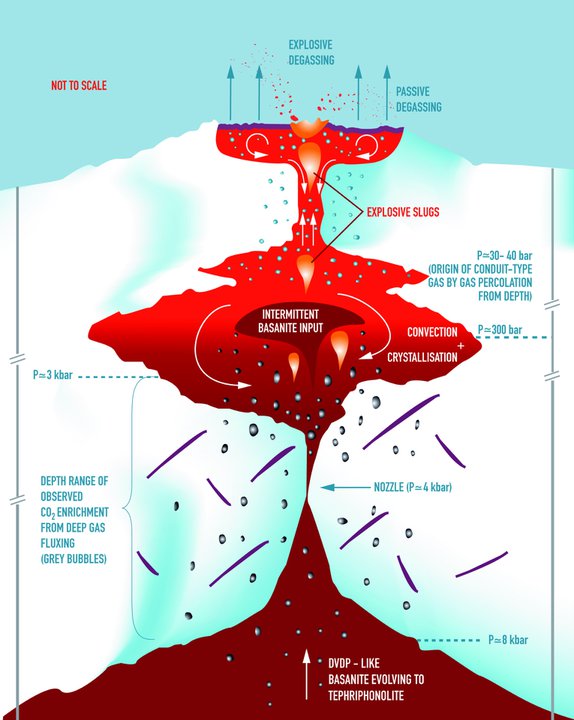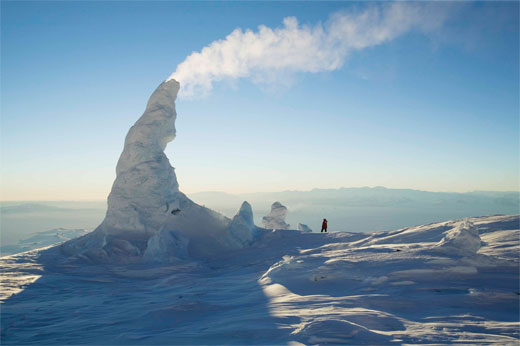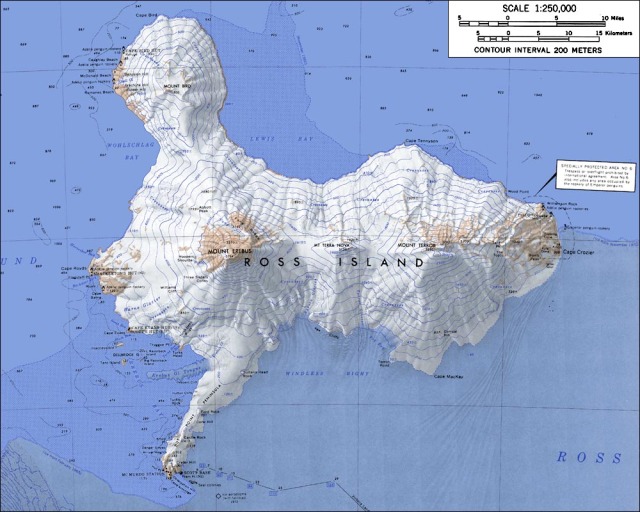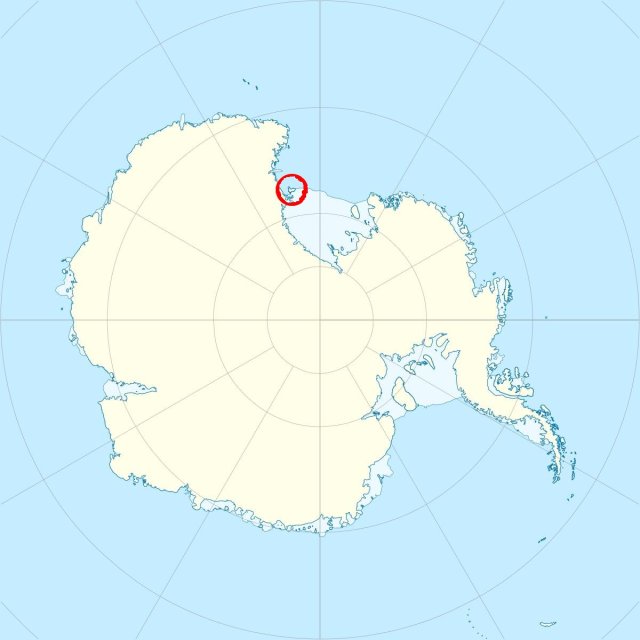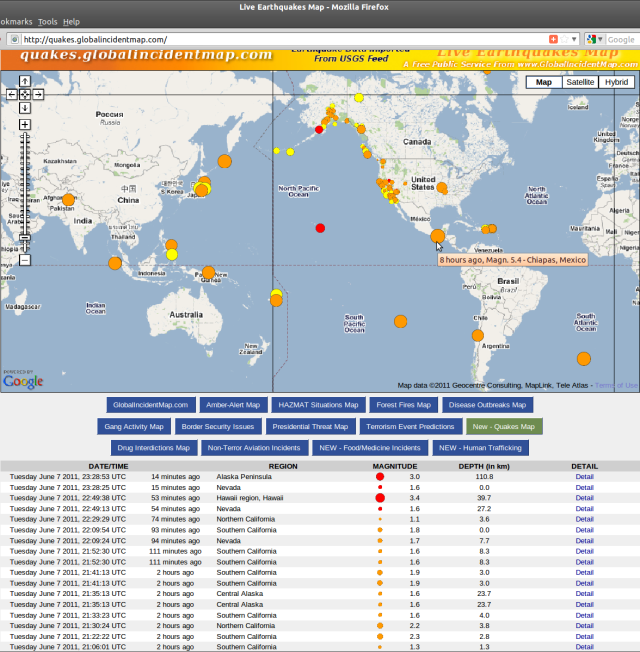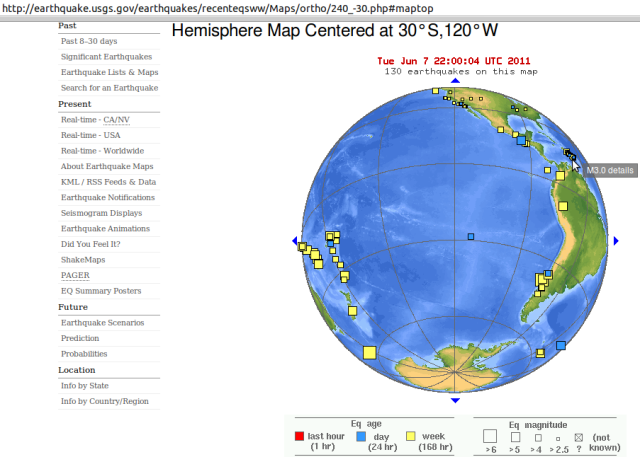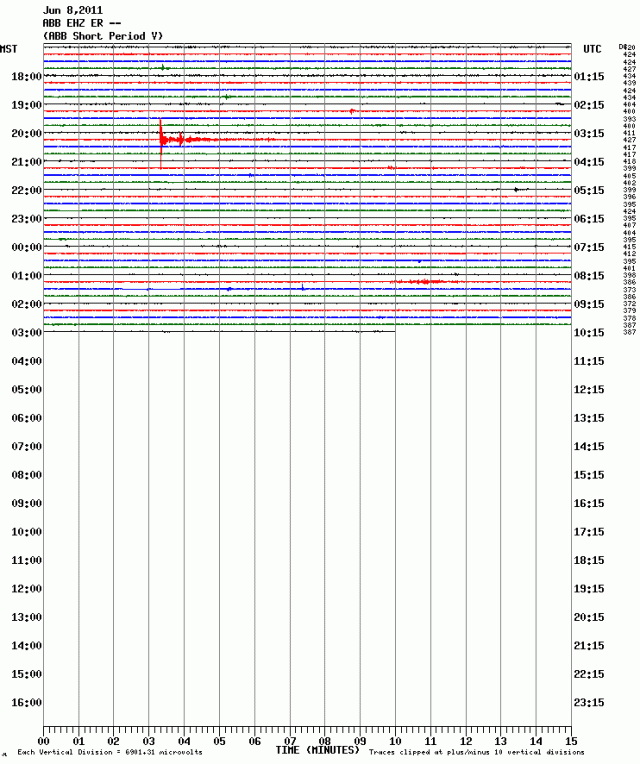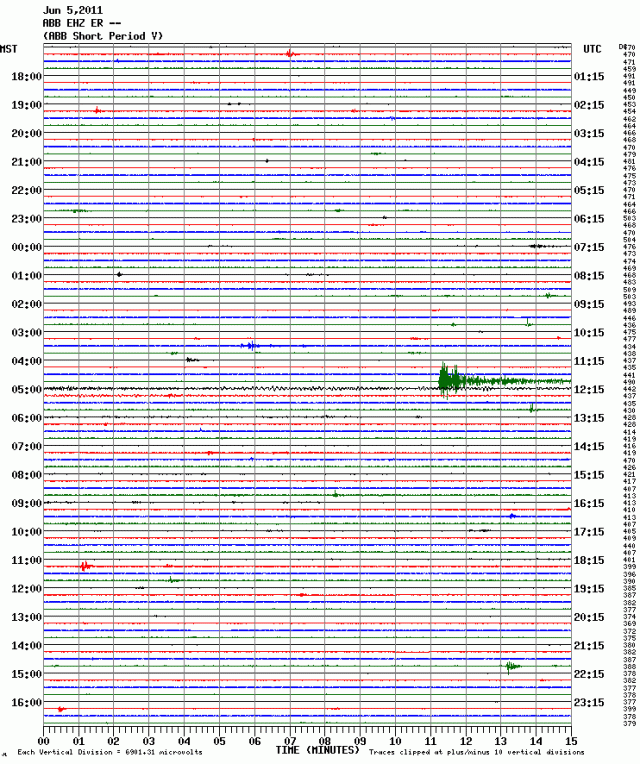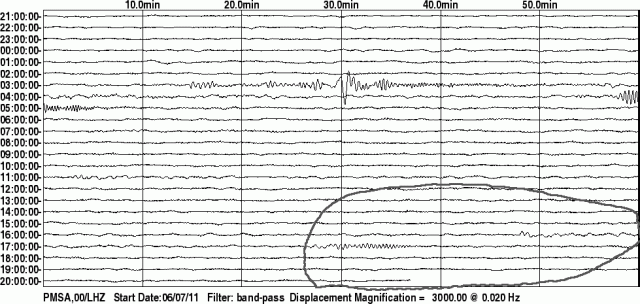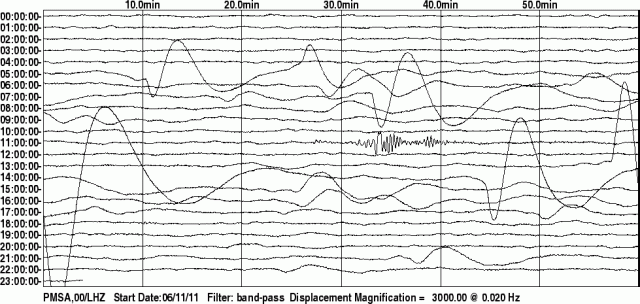My recent blog posts have traced the progression of Pacific Rim plate-boundary subduction movements, from north to south, from Alaska to Antarctica, with New Zealand in between – Zealandia continent being the least mobile, thickest piece of Pacific Plate crust on Earth, and therefore the last Pacific mass to move: an enormous distinction, that governs our edgy tectonic and seismic life. Viz 5.7 south-west Tonga Trench ridge quake shakes NZ 26 June and Next ChristChurch 6+ quake 4 July, Taupo’s deep plate shift today shows how far the south has already moved. Are we building significant momentum now, that can soon “unzip” the Southern Alps fault, as is due?
Magnitude 6.5, Tuesday, July 5 2011 at 3:36 pm (NZST), 30 km west of Taupo:
Note, there was very clear indication this moderately big deep-quake event was coming via Hikurangi Trough:
Magnitude 3.9, Monday, June 27 2011 at 10:00 am (NZST), 30 km east of Castlepoint geonet
Magnitude 3.9, Sunday, July 3 2011 at 8:02 pm (NZST), 50 km east of Castlepoint geonet
Magnitude 4.4, Monday, July 4 2011 at 4:06 am (NZST), 60 km south-east of Porangahau geonet
Magnitude 5.0, Monday, July 4 2011 at 8:36 pm (NZST), 60 km south-east of Porangahau geonet
Magnitude 4.2, Monday, July 4 2011 at 10:02 pm (NZST), 60 km south-east of Porangahau geonet
Magnitude 3.9, Tuesday, July 5 2011 at 7:37 am (NZST), 20 km south-east of Arthur’s Pass geonet
Magnitude 2.6, Tuesday, July 5 2011 at 08:21 am (NZST), near 11626 W Coast Rd Arthur’s Pass: Crowe.co.nz
Magnitude 4.6 – NEAR THE SOUTHEAST COAST OF AUSTRALIA 2011 July 05 01:32:13 UTC Victoria: USGS
More attention is now required, to Taupo volcano in particular: “The Taupo volcano last erupted over 1,800 years ago… first began to erupt over 300,000 years ago. It is very large and has many vents, most of which are now under Lake Taupo. Geological studies of Taupo show that the volcano makes up only the northern half of the lake and a small surrounding area but there have been numerous eruptions from different sites within this large volcano… The Taupo eruption was the most violent eruption in the world in the last 5,000 years… [and] took place from a line of vents near the eastern side of the modern lake” – GNS Science.
Media coverage has been quick to echo the GNS Science view, that this 150km-deep quake was in no way unusual or connected to Christchurch events: ‘We typically have maybe two, three events at that depth of around magnitude five, magnitude six a year – it is normal New Zealand process’. Quakes all part of regular activity – scientist “GNS scientist Brad Scott explains the link between seismic and volcanic activity following yesterday’s Taupo quake” TV1 Breakfast 6July2011 Ref. tectonic earthquake on subducting slab, plate boundary process, not a 15-20km deep volcanic process.
Jul 6 2011 – Taupo Earthquake: Questions and Answers – GNS Science.
Knowing approximately when big quakes are coming is of no consequence to the international scientific community, by current study discipline, except in Japan. Is that acceptable, or simply what we must expect?
5July2011 @6pm ONE News “..for Wellingtonians and for Christchurch residents, they’re just brushing it off as another small shake'” Quake shakes central NZ “A 6.5 magnitude earthquake which struck the central North Island has been felt across much of New Zealand, but there have been no reports of damage.. Geonet said it would be unlikely that it caused any damage because it was so deep. Aftershocks were also unlikely.. Jason Pye, also from Wellington, said it was the strongest quake he’s felt in many years. ‘Bit of a jolt then shaking got worse for about 4 seconds then slowly stopped, everything was shaking but nothing fell of shelves etc.'” 05July2011 + Quake jolts Melbourne “A magnitude 4.4 earthquake, with its epicentre near Korumburra in Victoria’s east, has been felt more than 100 kilometres away in Melbourne.. Geosciences Australia reported the depth at 2km.. Hundreds of small aftershocks followed a similar earthquake in 2009. A number of tremors measuring between 1.8 and 4.6 originated near Korumburra in March and May 2009, with the largest on March 18 felt as far away as Bacchus Marsh, 50km west of Melbourne” ONE News
North Islanders rattled by 6.5 magnitude quake “The six and a half magnitude earthquake centred just west of Taupo yesterday caused no damage, but has shaken the nerves of many North Islanders. (2′48″)” RadioNZ Morning Report 6July2011
May 31 2011 – Earthquake swarm under Lake Taupo “From late evening on Saturday 28 May until early Monday 30 May, a small swarm of earthquakes occurred in the southern part of Lake Taupo between Kuratau and Motuoapa. Twenty-seven earthquakes were recorded and they were all located at shallow depths (< 10 km). The largest earthquake had a magnitude of 2.4, but they were mostly between magnitudes 1.7 and 2.2. Small swarms like this often occur within the central part of New Zealand and are likely to be associated with occasional movement on small faults in the southern part of the lake. We believe they are due to the normal extensional processes (stretching and thinning of crust) that occur in the Taupo Volcanic Zone. There is no evidence that the earthquakes are related to a change of volcanic activity" geonet.org.nzRumblings at Ruapehu spark alert for planes “Increased rumblings under Mt Ruapehu and a warmer-than-usual crater lake have led authorities to raise alert levels for planes flying over the area. A volcanic eruption is not imminent – the alert level remains at one out of five – but volcanologists say there are subtle signs of unrest under Ruapehu, which last erupted in 2007.. eruptions can occur with little or no warning” NZ Herald 6Apr2011
Facebook comment: “Government has a strong command-and-control civil defence approach, to prevent panic of either NZ or overseas investors, that makes us populace really sacrificial lambs ~0~ ”

Source: Geonet.org.nz Waikato 60 days of Recent Deep Earthquakes 6Jul2011. Update:
Hikurangi Trough continues to move:
Magnitude 4.0, Wednesday, July 6 2011 at 8:21 am (NZST), 40 km south-east of Porangahau
A Northland-Canterbury shake here?:
Major quake-lines appear to be asserting themselves and coming to life – SW-NE x 2 = Alpine Fault onto Wairau and Awatere fault areas; SE-NW x 1 = spine of the fish, Te Ika a Maui – all at oblique angles to the Greendale Fault:

